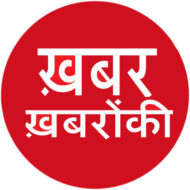
The Indian Rupee strides towards Globalisation
Ira Singh
14 July’23
In a transformative move, the Indian rupee is rapidly advancing towards globalisation, marking a significant milestone in India’s economic landscape. With a focus on fostering international trade, attracting investments, and enhancing financial stability, the Indian government has embarked on a comprehensive journey to globalise its currency, the rupee.
The globalisation of the Indian rupee aims to position it as a prominent global currency, alongside the likes of the US dollar, euro, and yen. This strategic shift is backed by a series of initiatives that leverage India’s economic prowess and its growing influence in the global marketplace.
An RBI-appointed committee recently suggested measures for the internationalisation of Indian rupee with inclusion in IMF’s Special Drawing Rights Basket (SDR). The panel proposed integrating Indian currency for cross-border transactions as well,as per media reports.
SDR is an international reserve asset created by the IMF to supplement the official reserves of its member countries. It is a potential claim on the freely usable currencies of IMF members. As such, SDRs can provide a country with liquidity. A basket of currencies defines the SDR: the US dollar, euro, Chinese yuan, Japanese yen, and the British pound.
The Inter Departmental Group (IDG) headed by RBI executive director R S Ratho in its report said that internationalisation is a process rather than an event, with continuous efforts to build upon all the initiatives that have been taken in the past.
Suggesting short-term measures, the panel said, there is a need to design a template and adopt a standardised approach for examining the proposals on bilateral and multilateral trade arrangements for invoicing, settlement and payment in INR and local currencies and encourage opening of INR accounts for non-residents (other than nostro accounts of overseas banks) both in India and outside India.
It also recommended integrating Indian payment systems with other countries for cross-border transactions and strengthening financial markets by fostering a global 24×5 INR market and promoting India as the hub for INR transactions and price discovery.
The Inter-Departmental Group (IDG) of the Reserve Bank of India (RBI) was formed in December 2021.
The objective of the IDG was to review the extant position of INR as an international currency and to frame a road map for the internationalisation of INR. The IDG has since submitted its report containing its final set of recommendations, according to sources.
As the Indian economy continues to grow and mature, the internationalisation of the Indian rupee could serve as a significant milestone, positioning the currency alongside other major global currencies. The inclusion of the rupee in the IMF’s SDR basket would not only affirm India’s economic progress but also contribute to the stability and diversification of the international monetary system.
